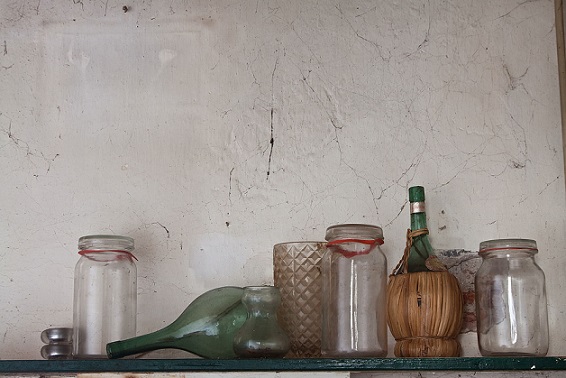L’objet feuilleté. Sulla fotografia tra Barthes e Proust
DOI:
https://doi.org/10.13130/2240-9599/4531Abstract
Photography incarnates a dream of transparency since, as Roland Barthes says, “a photograph is always invisible: it is not it that we see. In short, the referent adheres”. In this regard, he provides a strange example: “The Photograph belongs to that class of laminated objects whose two leaves cannot be separated without destroying them both: the windowpane and the landscape”. In this sense, photography perfectly realises the illusion of a support which is unveiled in its materiality in order to become a pure objectivity. According to Proust, this supposed transparency is destined to fail: no photograph, in the Recherche, ever leads us to a moment of recognition. It's as if photographs were not able to let the original rise up – in transparency – without operating some kind of alteration or modification.
Proust’s scepticism toward photography is bound to a particular conception of time: he criticises in particular the instantané, a kind of image that pretends to extract a sole instant from the continual flux of time.
The instantané, however, is not the only aspect of photography considered by Proust. Proust uses expressions like “cliché négatif”, “chambre noire intérieure”, “entrée condamnée”, to show us less the description of a “photo-graphy” (light-writing) than that of a “skia-graphy” (shadows-writing). Finally, I consider the topos of the “not developed” photograph with relation to the Proustian conception of memory, that is, a memory which, according to Walter Benjamin, is deeply connected with oblivion and with the shadows of our experience.
Riferimenti bibliografici
BARTHES, Roland, La camera chiara. Nota sulla fotografia (1980), tr. it. di GUIDIERI, Renzo, Torino, Einaudi, 1980.
BARTHES, Roland, La Préparation du roman, suivi des séminaires La Métaphore du labyrinthe et Proust et la photographie, texte établi, annoté et préfacé par LEGER, Nathalie, Paris, Seuil/IMEC, 2003.
BENJAMIN, Walter, Per un ritratto di Proust (1929), tr. it. di MARIETTI, Anna, in Avanguardia e rivoluzione, Torino, Einaudi, 1973.
DIDI-HUBERMAN, Georges, L’invention de l’hystérie, Paris, Macula, 1982.
FREUD, Sigmund, Costruzione nell’analisi (1937), tr. it. di MUSATTI, Cesare, Torino, Bollati Boringhieri, 1979, vol. 11.
FREUD, Sigmund, Eziologia dell’isteria (1896), tr. it. di MUSATTI, Cesare, Torino, Bollati Boringhieri, 1969, vol. 2.
GALTON, Francis, Inquiries into human faculty, London, Dent, 1911.
PIAZZA, Marco, La camera oscura della memoria. L’archivio proustiano, in GIRIMONTI GRECO, Giuseppe - MARTINA, Sabrina - PIAZZA, Marco (a cura di), Proust e gli oggetti, Firenze, Le Cáriti, 2012, pp. 161-172.
PROUST, Marcel, Alla ricerca del tempo perduto (a cura di DE MARIA, Luciano e annotata da BERETTA ANGUISSOLA, Alberto - GALATERIA, Daria, tr. it. di Raboni, Giovanni), Milano, Mondadori, 1987-1993, 7 voll.
RICŒUR, Paul, Tempo e racconto II (1984), tr. it. di GRAMPA, Giuseppe, Milano, Jaca Book, 1986, p. 242.
ROUILLE, André - MARBOT, Bernard, Le corps et son image, photographies du XIX siècle, Biarritz, Contrejour, 1987.
SICARD, Monique, L’année 1895, l’image écartelée entre voir et savoir, Paris, Les empêcheurs de penser en rond, 1994.



